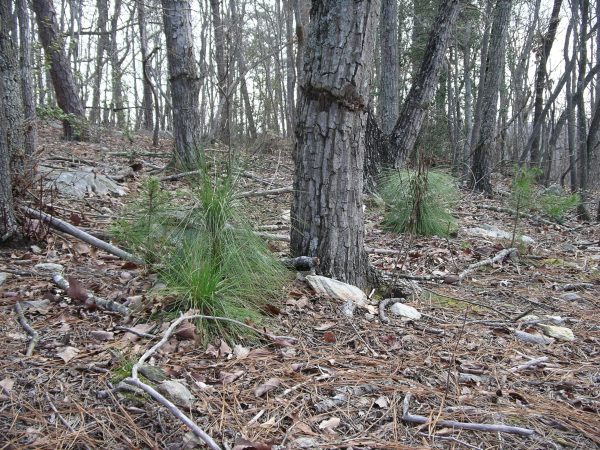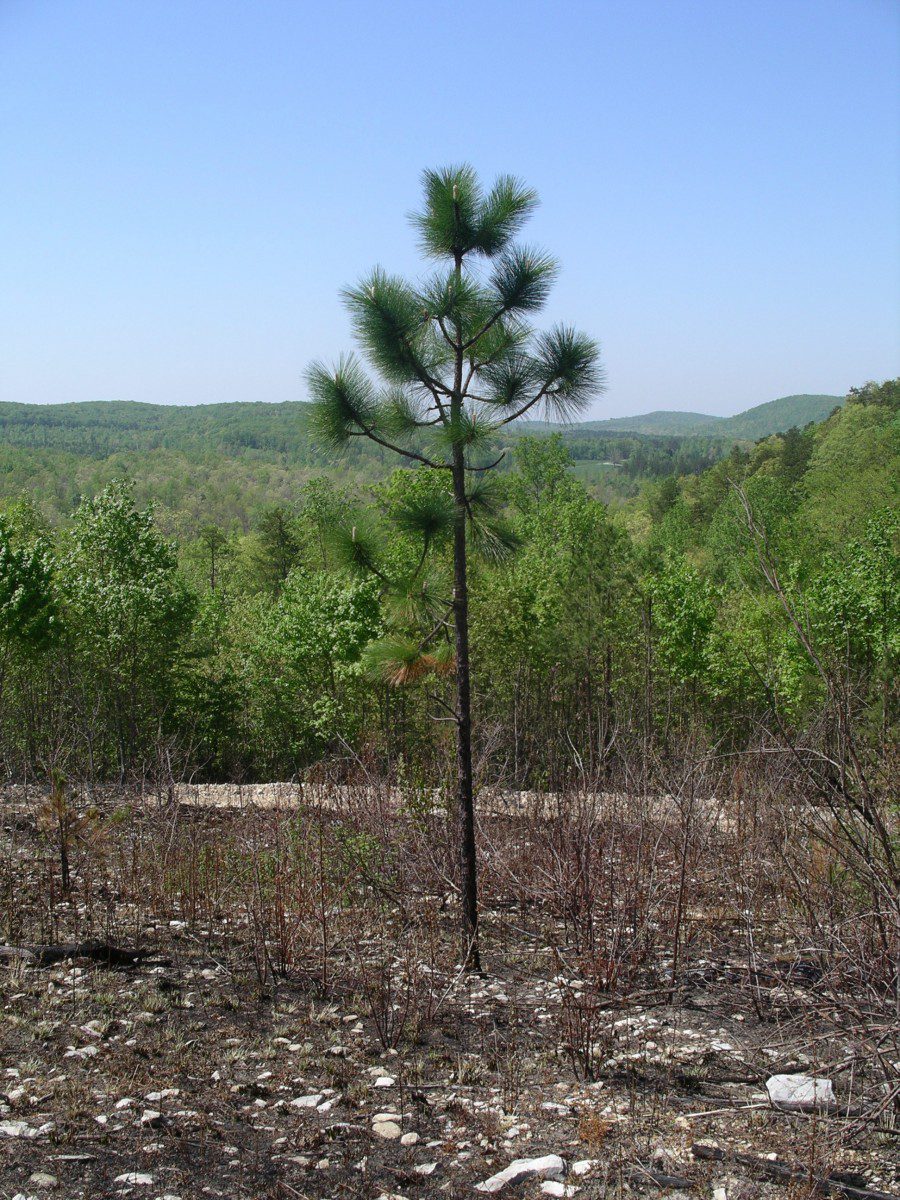Piedmont Longleaf Pines

The ground between Roberdo and Wadeville sometimes shakes when the Warrior football team of West Montgomery High takes to the field, but last October the tremors were due to a special project on land adjacent to the campus. The “West Montgomery tract” includes an 80-acre stand of mature longleaf that the US Forest Service has managed with fire for many years. It was the perfect site for the first large-scale collection of cones from Piedmont longleaf pines.
A harvest of this scope is more complicated than simply picking up some cones and tossing them into a bucket. A lot of thought and planning went into the effort prior to the collection. Once the site was chosen, 400-500 straight and healthy trees were hand-selected. To get the best germination rate, the cones have to be harvested while they’re still on the tree. Once they hit the ground, they’re past their peak. There are various methods to determine when they’re ready, all of which involve good marksmanship with a .22.

Why go to all this trouble when longleaf seedlings from coastal plain stock are readily available?
Whether you’re planting trees for habitat restoration or commercial production, it’s ideal to use seedlings best adapted to local conditions. Piedmont longleaf grows in clay instead of sand, and at higher elevations than trees in the Sandhills or coastal plain. I’ve seen young longleaf at sites across the piedmont. Trees endemic to the site don’t look the same as trees from coastal plain stock. Piedmont longleaf is more compact, with shorter, tighter branches. The needles are shorter and the cones are smaller. In general, they look less floppy. Perhaps this helps the trees withstand our ice storms in the piedmont. Some people speculate there might even be genetic differences. While this hasn’t been proven yet, it’s another reason to keep our Piedmont longleaf viable. The NCDFR is currently conducting a progeny study to compare longleaf from dozens of families, including those from the West Montgomery tract. We ought to have data about the differences within the next six to ten years.
The West Montgomery longleaf had a bumper crop of cones last fall. The 235 bushels collected that day yielded 227 pounds of seed. This will produce almost one million seedlings – enough to cover more than 2000 acres. Now these precious seedlings need to find a home.
Longleaf forests once covered a swath of 92 million acres from Texas to Virginia. Today, only about 3 million acres remain. In NC, the longleaf is at the western edge of its range in the Uwharries. That makes our trees special, and our region has been designated as a focus area for restoration. An additional 2000 acres would go a long way toward bringing back the longleaf forests of the Uwharries.
 Landowners can take advantage of several cost-share programs to help off-set the cost of establishment and maintenance. This is especially appealing since a healthy longleaf forest ecosystem requires on-going attention – you don’t just put these trees in the ground and walk away for 15-20 years as you might with loblollies. Fire is an essential component of longleaf forests, both to ensure the regeneration of the trees and to create a diverse understory teeming with wildlife.
Landowners can take advantage of several cost-share programs to help off-set the cost of establishment and maintenance. This is especially appealing since a healthy longleaf forest ecosystem requires on-going attention – you don’t just put these trees in the ground and walk away for 15-20 years as you might with loblollies. Fire is an essential component of longleaf forests, both to ensure the regeneration of the trees and to create a diverse understory teeming with wildlife.
We enrolled in the Piedmont Pine Savanna Cost-Share Project, a joint venture of the USFWS and EDF. Because it aims to restore habitat for rare species and ecosystems, it requires a long-term commitment of at least 10 years, preferably 25. This winter, we’re planting 20 acres of Piedmont longleaf. A few years ago, the tract was a loblolly plantation. After we clearcut the lobs, we installed fire lines, applied herbicide to control hardwoods, and recently brushsawed regenerating lobs. We’ll also do a hack and squirt to kill the lobs in riparian buffers. Once the vegetation is dry enough, we’ll run a fire across the tract and plant bare ground this winter. After that, we’ll burn every few years to encourage a lush understory of native grasses and forbs.
We were eager to put Piedmont longleaf on this particular tract because it sits at the foot of a mountain with endemic longleaf on the southwest flank. I like to think of it as reintroducing long-lost relatives.
— Ruth Ann Grissom
Photos by Ruth Ann Grissom.
To learn more about longleaf pine, including its cultural and economic influence on the southeast, check out the following books: Looking for Longleaf: The Fall and Rise of an American Forest by Lawrence S. Earley (published by UNC Press); and Ecology of a Cracker Childhood by Janisse Ray, published by Milkweed Editions.